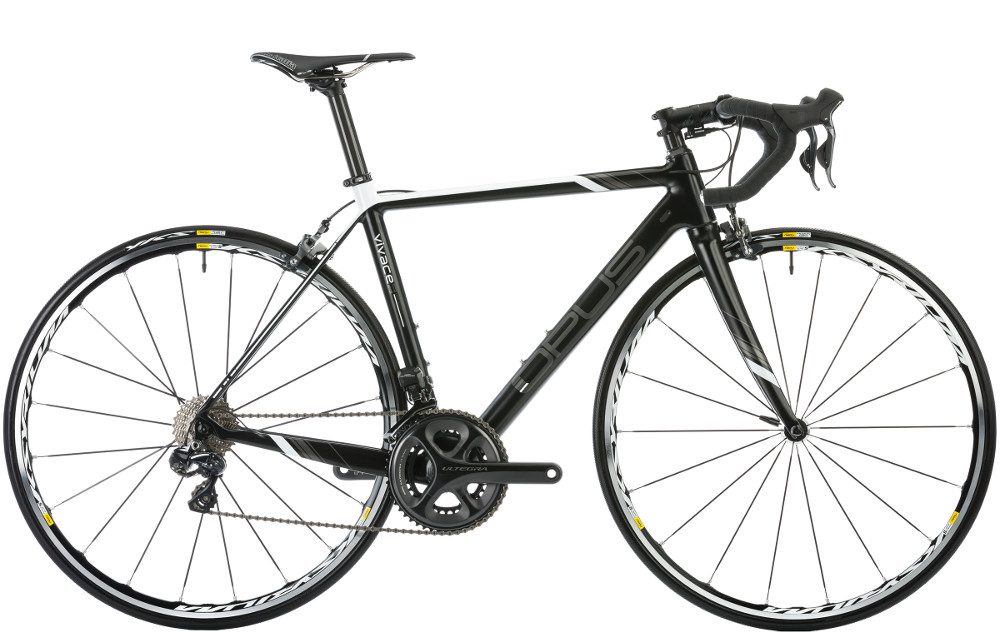Review: Opus Vivace 3.0
I did the bulk of my testing on the Opus Vivace 3.0 when most riders were hanging up their road bikes for the season. Winter was trying to make riding difficult, but I was watching the weather closely for openings. I was game to get on the bike as much as I could, not just in the name of research, but because it was so fun to ride. It has a great feel, making it a pleasure to take out on a lunch ride – even though I’d seem to spend most of the lunch ride suiting up – or out for hours.


I did the bulk of my testing on the Opus Vivace 3.0 when most riders were hanging up their road bikes for the season. Winter was trying to make riding difficult, but I was watching the weather closely for openings. I was game to get on the bike as much as I could, not just in the name of research, but because it was so fun to ride. It has a great feel, making it a pleasure to take out on a lunch ride – even though I’d seem to spend most of the lunch ride suiting up – or out for hours.
The cold-weather riding seemed appropriate for a bike designed in Montreal and made in mainland China in same factory that puts out a more expensive Tour de France winning bike frame. This bike shines in summer, too. Opus/ OGC rider Hugues Lapointe won the national masters criterium championships on a Vivace. He also rode it in the Montreal crit series Mardis Lachine. While the Vivace is a race bike and it’s featured in many crits, it’s not a skittish, tight-circuit race machine. It’s lively in corners, but can settle in when the road straightens out.
Opus Vivace 3.0
| Components | Shimano Ultegra Di2 |
| Wheels | Mavic Ksyrium Elite |
| Sizes | XS, S, M, L, XL, XXL |
| Price | $5,400 |
| Website | opusbike.com |
The frame has familiar tube shapes for a carbon-fibre structure: a beefy down tube and 1 1/8″ to 1 1/2″ tapered head tube for stiffness, and skinny seatstays to help with compliance and road feel. In terms of design, none of these features draw particular attention to themselves. The same goes for their performance. “It’s really about the balance,” said Opus brand manager for road, cyclocross and urban bikes, Raynald Deslauriers. “It’s not like we have this magic chainstay that makes the thing comfortable. Yes, the chainstay on the Vivace is very slim and that contributes to the overall comfort, but I also know it’s the carbon layup in the rest of the main triangle and the fork that help.”
The bike is a system with all its parts working together. One part really shouldn’t overshadow the others. In the case of the Vivace, the system works well, which makes for great handling, snap in a town-line sprint and a good feel on the climbs. Stéphane Le Beau, the now-retired founder of Opus and multiple masters track world champion, was behind the design of this bike. All his experience riding, not just on the track but on the road too, filtered into this system.
The spec on the Vivace 3.0 is sharp, full Shimano Ultegra Di2. Even the chain and cassette are from the Japanese company’s second-to-the-top line. On my first ride, I got out the door before doing a proper check on the chain’s alignment. I did appreciate the “barrel adjustment” feature from the shift buttons. I dialled the alignment with a few clicks and continued on. The Mavic Ksyrium Elite wheels are matched well to the bike. Lately, I’ve been gravitating toward 25-mm tires, that little bit of extra width can smooth out the ride compared with 23 mm treads. But, the Vivace’s frame construction provides a good amount of compliance, so I didn’t find myself missing my 25s.
The 2015 model of the Vivace 3.0 is unchanged from the previous year. Deslauriers and his team figured they shouldn’t mess with a good thing. I’m glad they stayed the course. They’ve made a fun, top-performing bike that, at $5,400, is great value.
It’s not a skittish, tight-circuit race machine. It’s lively in corners, but can settle in when the road straightens out.
